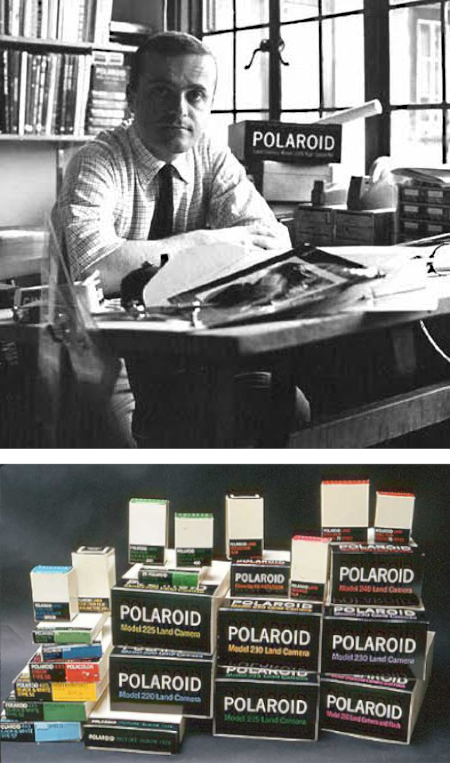
Paul Giambarba
Illustrator, cartoonist and caricaturist became designer and art director for Polaroid.
In 1958 the company decided to hire freelance designer Paul Giambarba with a view to revitalizing the brand.
This was the start of a relationship that was to last twenty-five years—Giambarba changed the face of Polaroid. He was responsible for creating packaging for films, cameras and accessories.
Giambarba's first initiative was to transform the logo into an uppercase News Gothic typography, and his second was to give the company's shelf distinction by way of black end panels, which were easily discernible in its TV spots (which were in black and white). This rebranding lent Polaroid some design credibility.
His innovative black packaging successfully subdued the dominance of Kodak yellow at point-of-purchase and spawned a vogue of black packaging within the industry.